- DroidAfrica
- Gadgets
- Xiaomi
- Xiaomi Redmi 8A Dual
Xiaomi Redmi 8A Dual

Xiaomi Redmi 8A Dual Highlights and Overview
Xiaomi Redmi 8A Dual is the upgraded version of the popular Redmi 8A. As the name suggests, the new comer comes with a dual camera modules at the back, instead of the single sensor used in the standard version. The device is literally a re-branded Redmi 8, and as such, comes with a 6.22 inch HD+ display, with a 720 x 1520 pixels resolution, featuring a notch overhead the display.
On the hardware department, there is an octa-core Qualcomm Snapdragon 439 CPU clocked at 1.95Ghz, along with Adreno 505 GPU. The device is available in either 2/3 GB RAM and 32GB internal storage with support for external SD card up to 1TB.
As mentioned above, the Redmi 8A Dual comes with a dual 13 + 2 MP main camera along with a single LED flash, while an 8 megapixel sensor seats in the display notch upfront. The phone does not come with a fingerprint scanner, but has FaceId and other Android security system.
It has a larger 5000mah battery, with support for 18W fast charging via USB Type-C interface. The device run Android 9.0 (Pie) out of the box, and provides support for dual SIM with 4G LTE networks on both SIMs. Other specification and silent features of the Xiaomi Redmi 8A Dual are detailed in the table below.
Xiaomi Redmi 8A Dual Full Specifications and Features
NETWORK
| Technology | GSM / CDMA / HSPA / LTE |
| 2G Network Bands |
GSM 850 / 900 / 1800 / 1900 - SIM 1 & SIM 2 CDMA 800 & TD-SCDMA - China |
| 3G Network Bands |
HSDPA 850 / 900 / 1700(AWS) / 1900 / 2100 - Global HSDPA 850 / 900 / 1900 / 2100 - China |
| 4G Network Bands | LTE band 1(2100), 2(1900), 3(1800), 4(1700/2100), 5(850), 7(2600), 8(900), 20(800), 34(2000), 38(2600), 39(1900), 40(2300), 41(2500) - All Regions including the US, Canada and China |
| 5G Network Bands | Does not have support for 5G Network |
| Speed | HSPA 42.2/5.76 Mbps, LTE-A (2CA) Cat6 300/50 Mbps |
LAUNCH
| Also Known As |
- - |
BODY
| Dimensions | 156.5 × 75.4× 9.4 mm |
| Weight | 188 grams |
| Build | Front (Gorilla Glass 5), aluminum frame |
| SIM Type | Dual SIM (Nano-SIM, dual stand-by) |
DISPLAY
| Display Type | IPS LCD capacitive touchscreen, 16M colors |
| Size | 6.22 inches, 96.6 cm2 (~81.9% screen-to-body ratio) |
| Resolution | 720 x 1520 pixels, 19:9 ratio (~270 ppi density) |
PLATFORM
| Operating System | Android 9.0 (Pie); MIUI 11 |
| Chipset | Qualcomm SDM439 Snapdragon 439 (12 nm) |
| CPU | Octa-core (2x1.95 GHz Cortex-A53 & 6x1.45 GHz Cortex A53) |
| GPU | Qualcomm Adreno 505 |
MEMORY
| RAM + ROM | 3/4 GB |
| Card Slot | microSD, up to 1TB (uses dedicated slot) |
MAIN CAMERA
| Camera Type | Double Lenses |
| Camera Sensor(s) | 13 + 2 MP main camera |
| Camera Features |
Autofocus Continuous shooting Digital zoom Digital image stabilization Geotagging Panorama HDR Touch focus Face detection White balance settings ISO settings Exposure compensation Self-timer Scene mode Sensor size - 1/3.1" Pixel size - 1.0 μm Phase detection |
| Video Resolution | 1080p@30fps (gyro-EIS) |
SELFIE CAMERA
| Camera Type | Single Lens |
| Camera Sensor(s) | 8-megapixel |
| Camera Features |
Sensor size - 1/3.1" Pixel size - 1.12 μm Face unlock |
| Video Resolution | 1080p@30fps |
SOUND
| Loudspeaker | Yes |
| Speaker Location | Chin, below display |
| Audio Jack Type | Yes, 3.5mm audio jack |
CONNECTIVITY
| Bluetooth | Bluetooth 4.2, A2DP, LE, aptX, Infrared port |
| NFC | |
| GPS | Yes, with A-GPS, GLONASS, GALILEO, BDS |
| FM Radio | Yes, FM radio (wireless) |
BATTERY
| Battery Capacity | Non-removable Li-Po 5000 mAh battery |
| Wireless Charging | No |
| Talk Time Talk Time is the longest time that a single battery charge will last when you are constantly talking on the phone under perfect conditions, Ambient temperature and highly dependent on the cellular network environment such as the distance to the closest cell network tower. | Up to 38 hours |
| Stand-by | Up to 830 hours |
OTHER FEATURES
| Sensors | Fingerprint (side-mounted), accelerometer, proximity, compass |
| Box Contents | Charging Brick / USB cable |
Xiaomi Redmi 8A Dual User Reviews and Opinions
LEAVE A REPLY
Disclaimer Note
We CANNOT guarantee 100% accuracy for the specification table above.

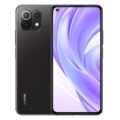
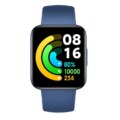
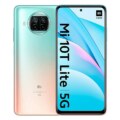

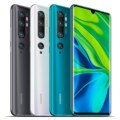
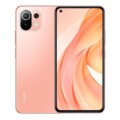






Do Xiaomi Redmi 8A dual support two different users in one device?